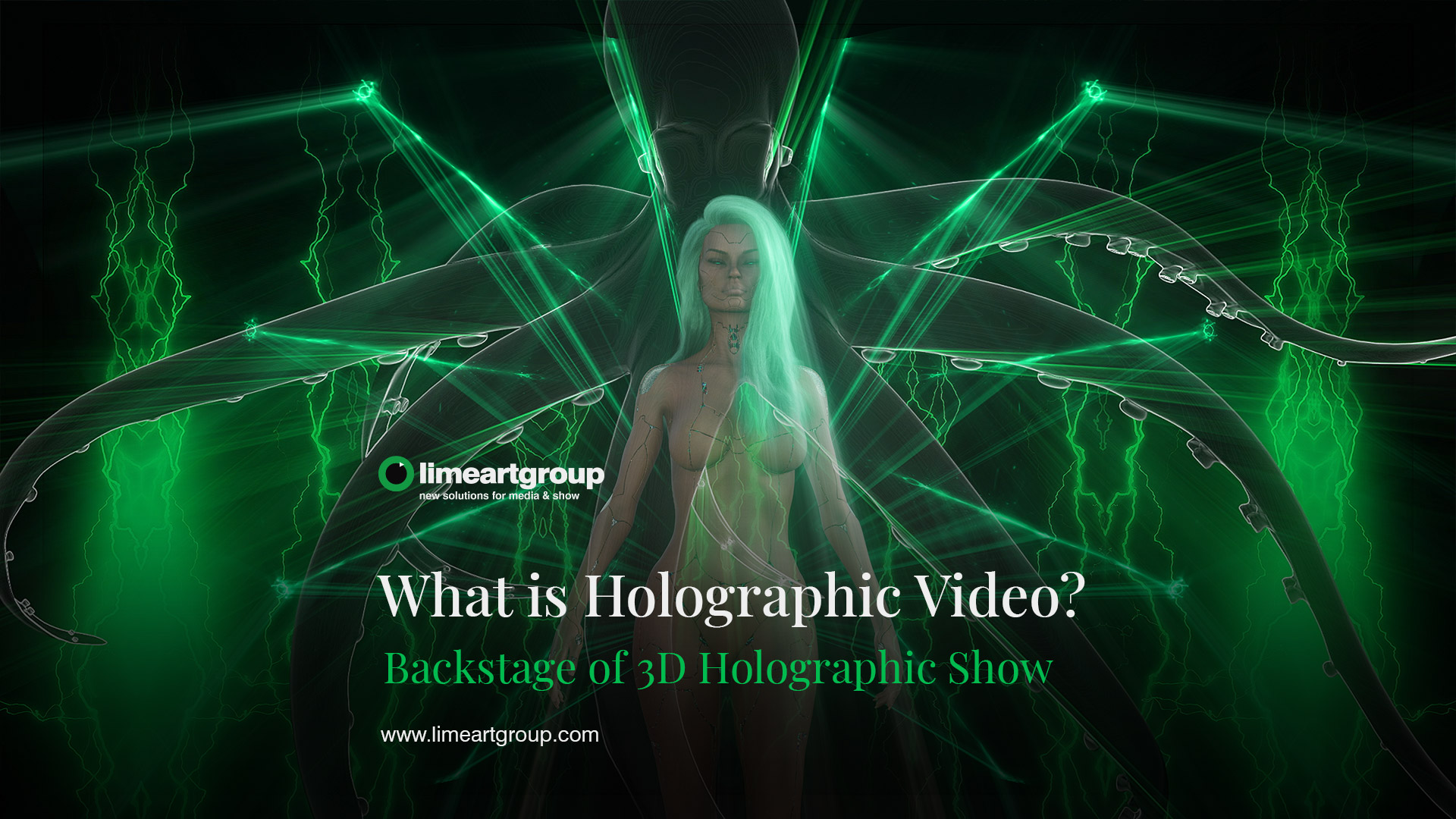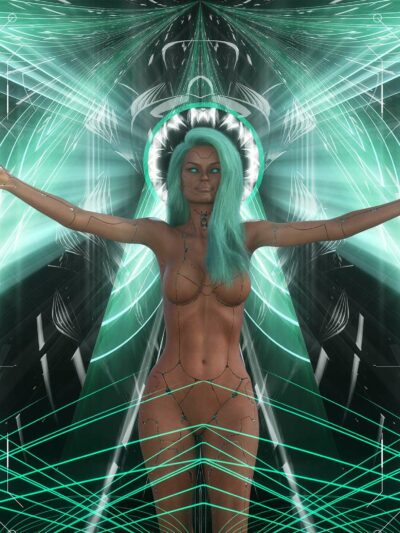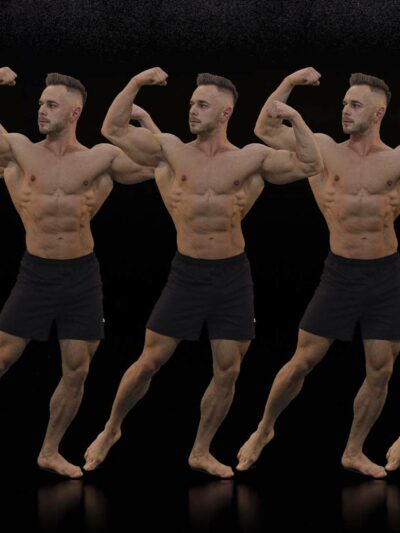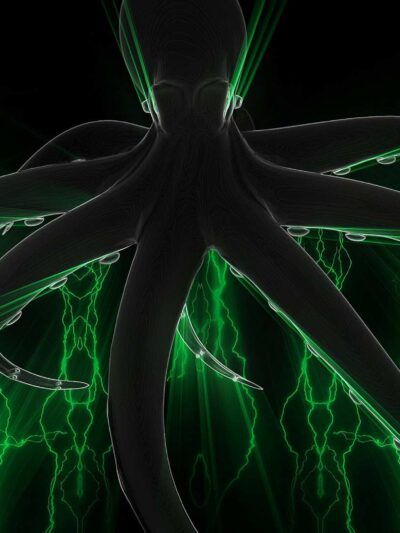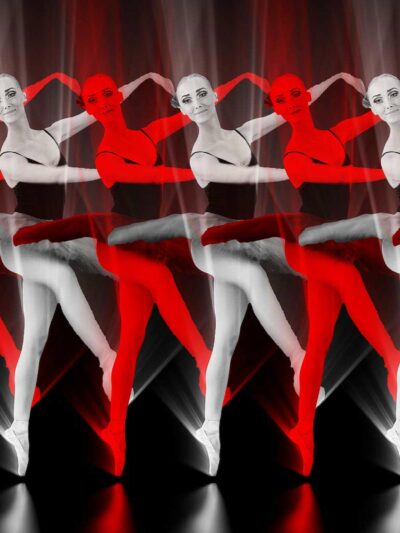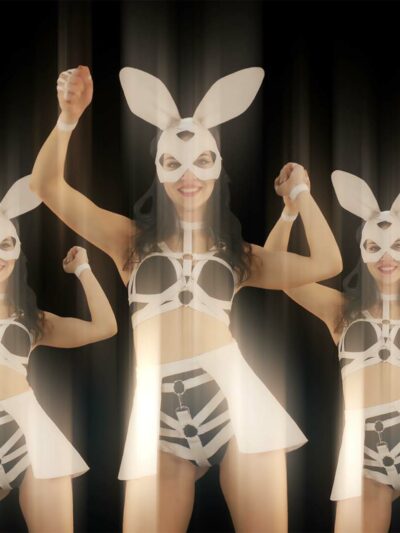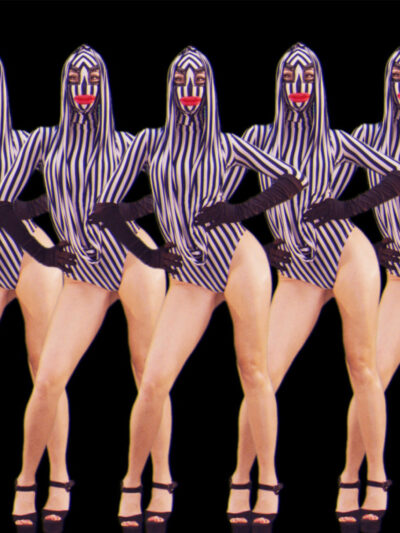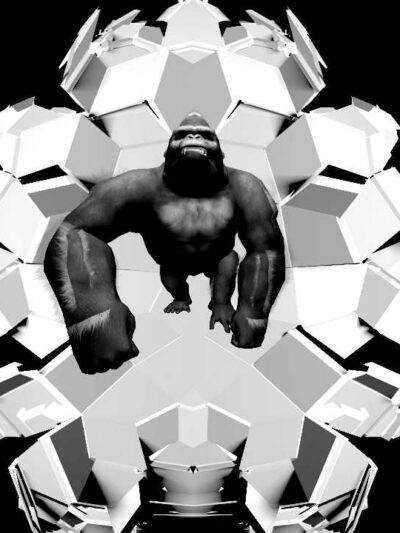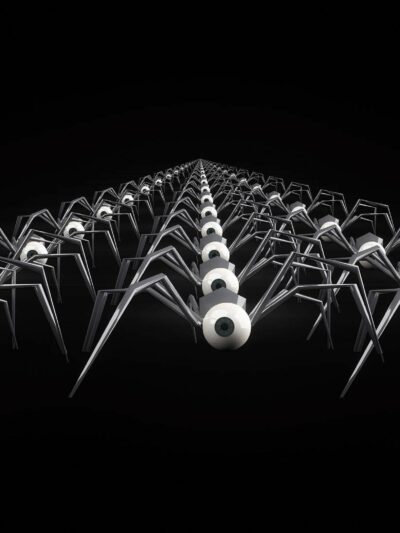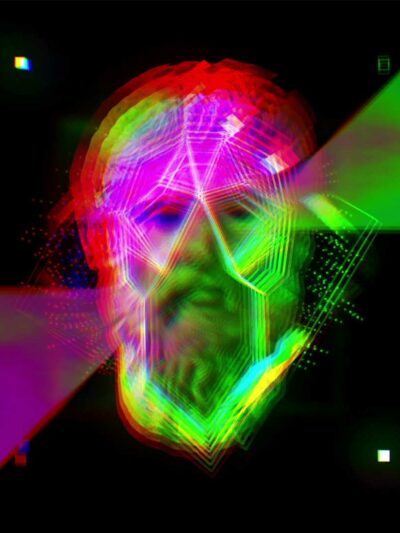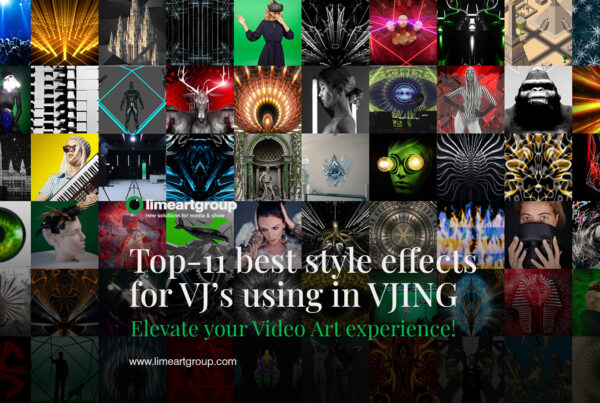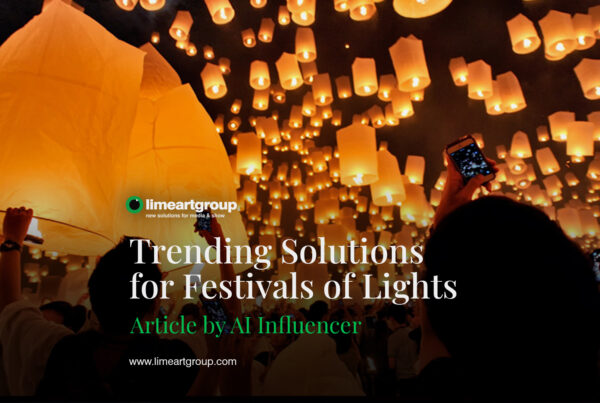All about Holographic Projection and hologram show
In this article, I, New Media Artist Alexander Kuiava, will provide a brief overview of holographic shows and answer the question of what holographic video actually is.
So, let’s start with the fact that even today in 2024, everything called a holographic 3D show is not actually what it seems. If we turn to science fiction and imagine a 3D hologram as something truly three-dimensional that can be viewed from different angles, then unfortunately, no one has yet invented such technology as we have seen, for example, in Star Wars movies. Today, we do not have such technology. Perhaps in the future, better understanding of the color spectrum and deeper exploration of laser technologies will lead to the creation of real 3D holographic and tangible content or devices that can create such an experience. In fact, a real 3D hologram is primarily a volumetric 3D projection that can be viewed from different angles in 360 degrees and will have its own real volumetric projection in the real world.
I believe that such real 3D volumetric holograms could be achieved in the future with the help of laser technologies, for example, when two invisible beams of light intersecting each other will create a visible point. Then a real 3D hologram would be possible.
The Misconception of 3D Holographic Shows
Currently, for any projections, whether they are light projections, video projections, or laser projections, a surface, a specific material with which the projection will interact, is required. This could be a regular wall, architectural elements, what we see in video mapping shows, or mediums like water, smoke, or transparent screens for so-called holographic installations and projections. Today, many artists in the show business industry use the term “3D holographic show” in the titles of their shows. For example, Eric Prydz and his 3D Holo Show made a sensation in the audiovisual media and entertainment market.
However, any holographic show today is created in ordinary 2D or 3D editors for video processing, motion design, or 3D animation. For example, After Effects, 3DsMax, Cinema4D, Maya, Blender, and others.
So why do they call it a 3D hologram when it’s not?
On the one hand, it’s always marketing. Today, having large budgets and the possibility to install a large amount of audiovisual equipment, as well as doing it on a very large scale, on large screens, creates breathtaking shows. Event producers and marketers come up with various approaches to recoup their investments. And for example, using a 3D Holo show setup will at least generate a lot of interest, and in conjunction with large-scale events, will create a real sensation, after which video clips from such events will go viral across the information space.
But in reality, it’s not true holography, but rather a pseudo-3D effect.
To create holographic pseudo-3D content, you need three main things:
- Surface or Material for Projection: You require a surface or material onto which the video content will be projected or displayed. This could be a transparent screen, glass, or any other suitable material that can display the projected image.
- Understanding of Scene Positioning: You need to understand the positioning of this material (the scene) and the projection plane relative to the viewer. This involves setting up the projection in such a way that it creates the desired illusion of depth and dimensionality when viewed from a certain angle.
- Content with 3D Animation: The content itself must have some 3D animation, meaning it should have depth and volume. Additionally, it’s crucial for the content to have either a transparent background or a black background to ensure that only the intended elements are visible when projected onto the surface.
That’s all you need to create holographic pseudo-3D content. With these elements in place, you can achieve visually striking effects that give the illusion of depth and three-dimensionality, even though they are technically projected onto a two-dimensional surface.
Breaking Down Step by Step:
Materials:
Let’s break it down into three types. The first is LED screens with a large pitch, or the latest innovation in recent years, fan-based screens – screens with a certain adjustment. And the third is transparent projection film.
- 1.1. LED Screens with a Large Pitch: These screens can be installed not only at large events but also in large shopping centers, malls, restaurants, or as advertising billboards. Their operation is simple: due to the large pitch between pixels, it creates empty spaces on the mounts. When a viewer looks directly at the video, they see not only the content but also the background behind such a screen. This creates the illusion that we are looking at a floating image in the air.
- 1.2. Fan-based Screens: The second option utilizes a different technology. LED pixels are installed on the blades of a fan, which rotate at high angular velocity, displaying video content. Due to the high speed, the structures of the blades are almost invisible. This creates the impression that the image is suspended in space. However, to achieve a 3D effect, the right content is necessary, which we will discuss below. Additionally, by installing several of these fans into one large structure, the display area of the video content can be increased. The downside of this technology is its high cost, installation difficulties, and considerable noise, making it impractical for use in calm interior settings.
- 1.3. Transparent Projection Film: The last and most relevant format for us is the use of transparent film. Its level of transparency is practically like glass. To display holographic video content on such a surface, a video projector is needed. This transparent film is designed in such a way that when light from the projector hits it at an angle of 30 to 45 degrees, the projection light reflects off it, creating a visible image on the transparent film. Because the film is transparent, we can fully see what is behind it, behind the video content.
Additionally, we can mention projection onto smoke and water. This is also widely used in the audiovisual technology market, but not always appropriate, as it requires additional technical resources.
Positioning:
The second important factor is the concept itself. When we decide to create a 3D holographic show, we must understand the space where our event will take place, where the video projectors will be installed, where the screen with transparent film will be located, and most importantly, where the audience will be in relation to the projection screen.
Typically, the projection screen with transparent film for holographic projection is installed in front of the artist, in front of the DJ stage. Often, a combination of two screens is used. One is a standard high-quality LED screen positioned behind the DJ, and the transparent film screen for holographic projection is placed in front of the DJ.
And now we are almost at our third point. If we understand that the DJ stage is elevated along with the screens by 3-5 meters, then we need to render the content where the camera will be offset as if downward. Conditionally using the parallax effect, we will render the content not totally straight and frontally (view from the front), but slightly distorted perspective-wise, because the audience will need to raise their heads or eyes slightly upward.
By the way, the technology of such distorted perspective is often used in the advertising industry for broadcasting video advertisements. 3D Naked Eye – Finding the perfect viewer placement point, and from this point, visual 3D content is created for screens with a curved structure.
Content
And finally, the most crucial aspect without which any 3D holographic show is impossible today is the content itself. You need to have video or 3D materials that you can project onto your screen. By the way, our company is a leader in the European market for creating audiovisual content for sale for events and art projects. We have a separate category on our website with holographic content that you can use for your events.
But let’s get back to the topic of education. There are two important aspects for content:
- 3.1 Understanding Positioning: You need to understand the position where the audience will be and where the projection screen will be located. Then, create 3D animation or video with slightly distorted perspective so that the objects in the video are placed in a 3D space that is essentially the same as your real location.
- 3.2 The Presence of an Alpha Channel or Black Background: This is essential. As you know, LED screens or video projectors cannot emit black light. The LED pixels simply turn off, creating the effect of emptiness. By the way, I’ve already mentioned this in my Happy Mapping video course when describing the technology of video projection 3D mapping. So, because the colored content will be projected onto the transparent film, it will be visible to the audience, since the black color is not reflected on video projections or LED screens.
Therefore, it’s crucial to have either an alpha channel or a black background in your content to ensure that only the intended elements are visible when projected onto the transparent film or LED screens.
Holographic Visuals
Content isolated on Black Background
-
Sale!
Select options This product has multiple variants. The options may be chosen on the product page
VJ Loops Pack Vol.97 – Space Jade
89.00€ – 299.00€ -
Sale!
Select options This product has multiple variants. The options may be chosen on the product page
VJ Loops Pack Vol.93 – Psy Octopus
79.00€ – 299.00€ -
Sale!
Select options This product has multiple variants. The options may be chosen on the product page
VJ Loops Pack Vol.82 – Echo Ballet
79.00€ – 299.00€ -
Sale!
Select options This product has multiple variants. The options may be chosen on the product page
VJ Loops Pack Vol.78 – Bohun Beats
59.00€ – 299.00€ -
Sale!
Select options This product has multiple variants. The options may be chosen on the product page
VJ Loops Pack Vol.73 – Mirror Ballet
99.00€ – 329.00€ -
Sale!
Select options This product has multiple variants. The options may be chosen on the product page
VJ Loops Pack Vol.71 – Twerkology
59.00€ – 299.00€ -
Select options This product has multiple variants. The options may be chosen on the product page
VJ Loops Pack Vol.68 – Bunny Honey
99.00€ – 299.00€ -
Sale!
Select options This product has multiple variants. The options may be chosen on the product page
VJ Loops Pack Vol.62 – Smoke Girls
59.00€ – 249.00€ -
Sale!
Select options This product has multiple variants. The options may be chosen on the product page
VJ Loops Pack Vol.59 – Rave Ape Gorilla
59.00€ – 329.00€ -
Select options This product has multiple variants. The options may be chosen on the product page
VJ Loops Pack Vol.3 – PolyMask
59.00€ – 159.00€ -
Sale!
Select options This product has multiple variants. The options may be chosen on the product page
VJ Loops Pack Vol.2 – Liquid Geometry
49.00€ – 289.00€
And as a result, we have the following situation:
The order of objects that the viewer sees will be as follows:
- Transparent film with video projection of specially created video content or 3D animation.
- DJ stage, the artist themselves.
- Video projection or LED screen in the background.
It’s precisely because of this order, and having transparent film and specially created 3D content, that we achieve the visual illusion of 3D holography. For example, from the front, we can see a large manta ray or shark swimming. Because we don’t see video frames or the edges of the transparent film, it will seem to us that these objects are floating in the air. And because the film is transparent, we can see both the DJ and everything behind them. Thus, our brain will create the illusion of such a 3D hologram.
Of course, if we move to a 90-degree angle and look from the side, we will see that the manta ray or shark are not actually volumetric but merely 2D images.
But again, audiovisual performance is not just one thing; it’s a combination of different technologies, concepts, equipment, and live performances. I hope this article was useful to you and that you learned how to create a 3D holographic show. Once again, I remind you that on our website, you can find a multitude of premium video art content that you can apply to your projects and earn a lot by creating audiovisual shows. Our content is very premium, exclusive, and the best on the market.
Follow our company’s channel on Instagram @limeartgroup and my personal blog @alexanderkuiava.
With the development of technology and the increasing accessibility of holographic video, its application is expected to expand. Perhaps in the future, we will see more breakthrough developments in this area, such as holographic televisions and interactive holographic projections, which will change the way we perceive and interact with visual data. Holographic video is not just a new technology; it’s a new way of interacting with the world of visual imagery, opening up amazing possibilities for art, science, education, and entertainment. It’s an exciting step forward in the world of visualization that we have yet to fully explore and utilize to reach new heights in creativity and innovation.
Best wishes from Vienna,
Thanks for your attention, faithfully yours,
Alexander Kuiava – Founder & CEO LIME ART GROUP
https://alexanderkuiava.com/

